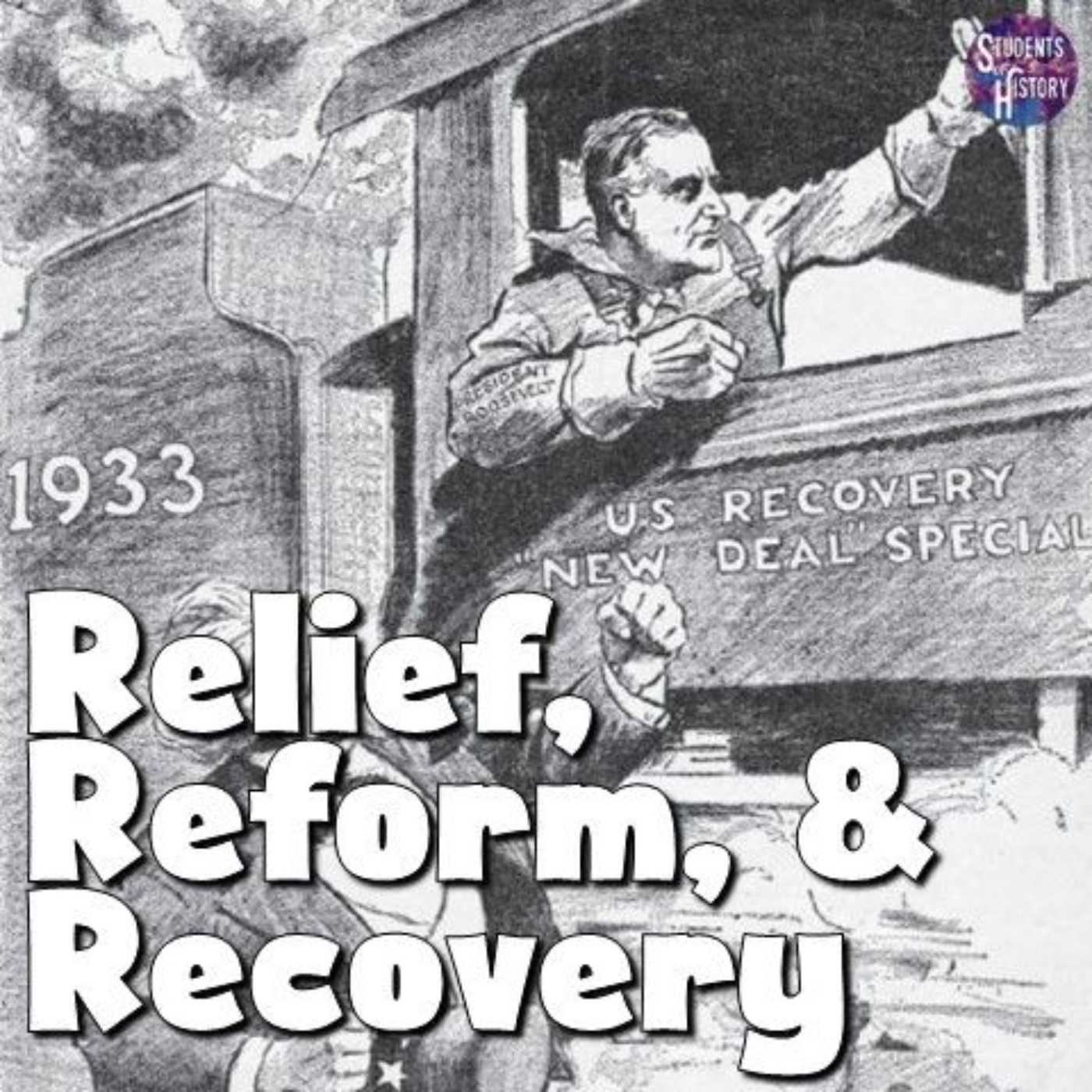The New Deal's Relief, Reform, & Recovery

President Franklin D. Roosevelt took office in 1933, in the midst of the Great Depression. As he promised in his campaign, Roosevelt quickly acted to provide aid to those in need and to help the economy.
FDR, as he was known, was elected for his campaign promise of a New Deal. This platform featured a range of federal programs to help provide the "Three Rs" – relief, recovery, and reform.

Much of FDR's New Deal legislation was enacted in the first three months of his presidency, also known as the Hundred Days.
"Relief" referred to immediate economic help for the people hurt by the Great Depression, namely the poor and unemployed.
FDR was quick to provide needed relief. Two days after he took office, Roosevelt declared a Bank Holiday, which suspended all banking activity for four days. Americans had been anxiously withdrawing their bank deposits and depleting many banks of all their cash.
During these four days, Congress passed the Emergency Banking Act, which worked to stabilize the banking system and insured bank deposits.
To alleviate high unemployment, two temporary job creation programs were created called the Civil Conservation Corp (CCC) and the Civil Works Administration (CWA). These provided a welcome solution for the many Americans desperate to find work.
In addition, the Federal Emergency Relief Act (FERA) provided grants to state agencies that, in turn, provided economic assistance to the people in those states.
“Recovery” referred to restoring the economy back to what it was by creating new jobs and spending federal money to revive the economy.
To stimulate the economy, FDR created temporary programs like the Agricultural Adjustment Act (AAA), which increased agricultural prices by controlling the amount of supply, and the National Industrial Recovery Act (NIRA), which controlled wages and prices.
The creation of the Home Owners Loan Corporation (HOLC) transformed the way mortgage loans were carried out and helped homeowners who were having trouble paying back their mortgage loans during the Great Depression.
Other recovery agencies and legislation included the Works Progress Administration (WPA), and the National Youth Administration (NYA), the Federal Housing Act (FHA).
The last "R", for "Reform" referred to implementing new regulations and permanent programs into the financial system to avoid another economic depression in the future.

This included the Securities Exchange Act, which created the Securities and Exchange Commission (SEC) to regulate the stock market. The Social Security Administration (SSA) provided and continues to provide economic assistance to the elderly and other more vulnerable populations. Today, social security is one of the most popular programs the government has ever created.
As a way to protect workers and enhance workers’ welfare, the National Labor Relations Board (NLRB) was created to guarantee the right of workers to enter into unions and engage in collective bargaining. Prior to this, employers could condition someone’s employment on a promise to not join a trade union.
Another major reform was the Federal Deposit Insurance Corporation (FDIC) that insures bank deposits up to $250,000. Today, if your bank went out of business, your money is insured by the government and you can get it back thanks to this New Deal program.